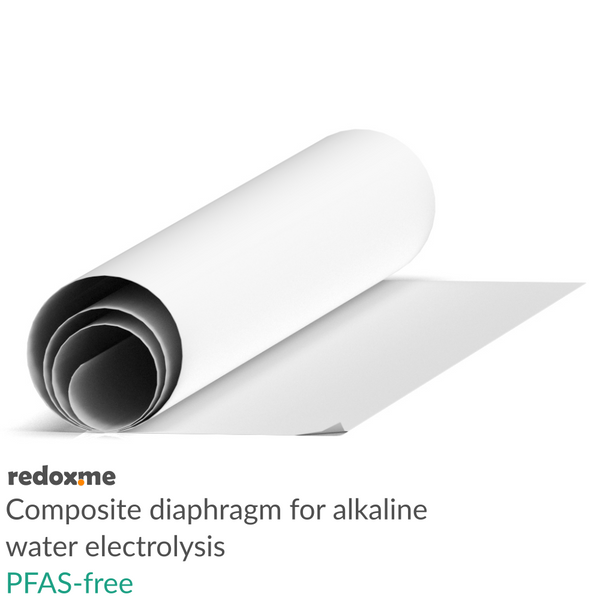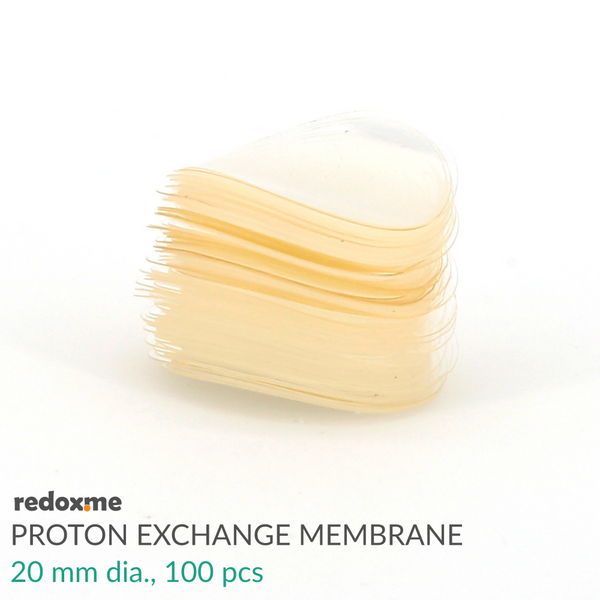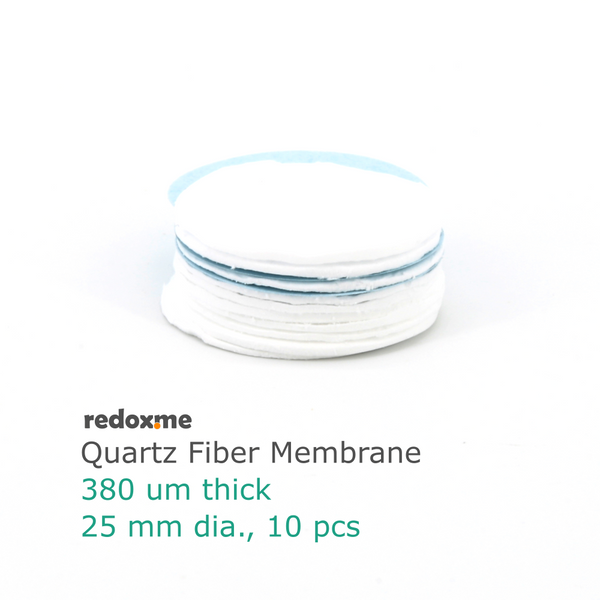Composite Diaphragm for alkaline water electrolysis (PFAS-free)

This composite diaphragm for alkaline water electrolysis, made of a polyphenylene sulfide (PPS) support layer coated with zirconium oxide (ZrO₂) and using a polysulfone (PSU) resin as a binder, combines the advantageous properties of each material to enhance performance in electrolysis systems. The PPS support layer provides excellent mechanical strength, chemical stability, and resistance to high temperatures, making it an ideal base material for use in harsh electrolytic environments. PPS is particularly well-suited for alkaline conditions, where it can maintain its integrity and durability without significant degradation. ZrO₂, the coating material, is known for its high ionic conductivity, excellent chemical resistance, and resistance to corrosion, especially in alkaline environments. When applied as a coating, ZrO₂ improves the diaphragm's ability to prevent crossover of gases, such as hydrogen and oxygen, during the electrolysis process. This enhancement contributes to the overall efficiency of the system by reducing parasitic reactions and improving gas purity. The PSU resin acts as a binder, providing the necessary adhesion between the PPS support layer and the ZrO₂ coating. Polysulfone is a thermoplastic polymer that offers high thermal stability, mechanical strength, and chemical resistance. Its role in the composite diaphragm is crucial for maintaining structural integrity under operational conditions, ensuring that the coating stays securely bonded to the PPS support layer throughout the electrolysis process.
Application note
This composite diaphragm is used in electrochemical applications such as water electrolyzers, where strong alkalis, high temperatures, and the risk of gas reactions (hydrogen and oxygen) are present. Therefore, using the composite diaphragm requires adherence to specific safety precautions. The composite diaphragm can be exposed to high temperatures (up to 110 °C), especially in water electrolysis processes. Regular monitoring of the system's temperature is crucial to prevent it from exceeding safe levels. High pressure in electrolyzers can damage the diaphragm. It is essential to install pressure relief valves and regulate the pressure to ensure safety. The composite diaphragm effectively prevents the mixing of gases (hydrogen and oxygen) during electrolysis. It is important to ensure that the gas separation systems are well-designed and maintained to avoid explosion risks. Ensure proper ventilation in the room where electrolysis takes place to prevent the accumulation of explosive gases, such as hydrogen. The composite diaphragm is designed to work in highly alkaline environments (e.g., using KOH or NaOH). It is important to handle these substances with caution, using appropriate personal protective equipment (gloves, safety goggles). In the event of electrolyte spillage or diaphragm damage, avoid direct contact with chemicals and immediately rinse the skin with water. If necessary, seek medical attention. While the composite diaphragm has high mechanical strength, avoid excessive bending, stretching, or compressing, as this may cause the diaphragm to break or get damaged. During the installation of the diaphragm, use the appropriate tools to avoid mechanical damage during assembly or disassembly. The composite diaphragm should be stored in a dry, cool, and well-ventilated space. It should be protected from contact with chemicals that could damage it and shielded from direct sunlight and moisture.
Specification
brand: CarbonXtech
models: Hydrergy ZSM260 and Hydrergy ZSM500+
weight density: 1±0.2 g/cm3
thickness: 260±30 (ZSM260), 500±50 µm (ZSM500+)
ionic resistance: <0.12 W×cm2 (ZSM260), <0.18 W×cm2 (ZSM500+)
maximum operating temperature: 110 ºC
dimensional stability: <1.5 %
porosity: 55±10 %
bubble point: >3 bar (ZSM260), >5 bar (ZSM500+)
gas permeability at 5 bar: 2±1 L/min×cm2 (ZSM260), 3±1 L/min×cm2 (ZSM500+)
tensile strength: >20 MPa
elongation at break: >35 %
Intrastat data
HS Code: 39209990
Country of Origin: Sweden
NET weight: 100 g
Product includes
1x Composite Diaphragm for alkaline water electrolysis in selected size and quantity
Related products
AEM Electrolyzer







